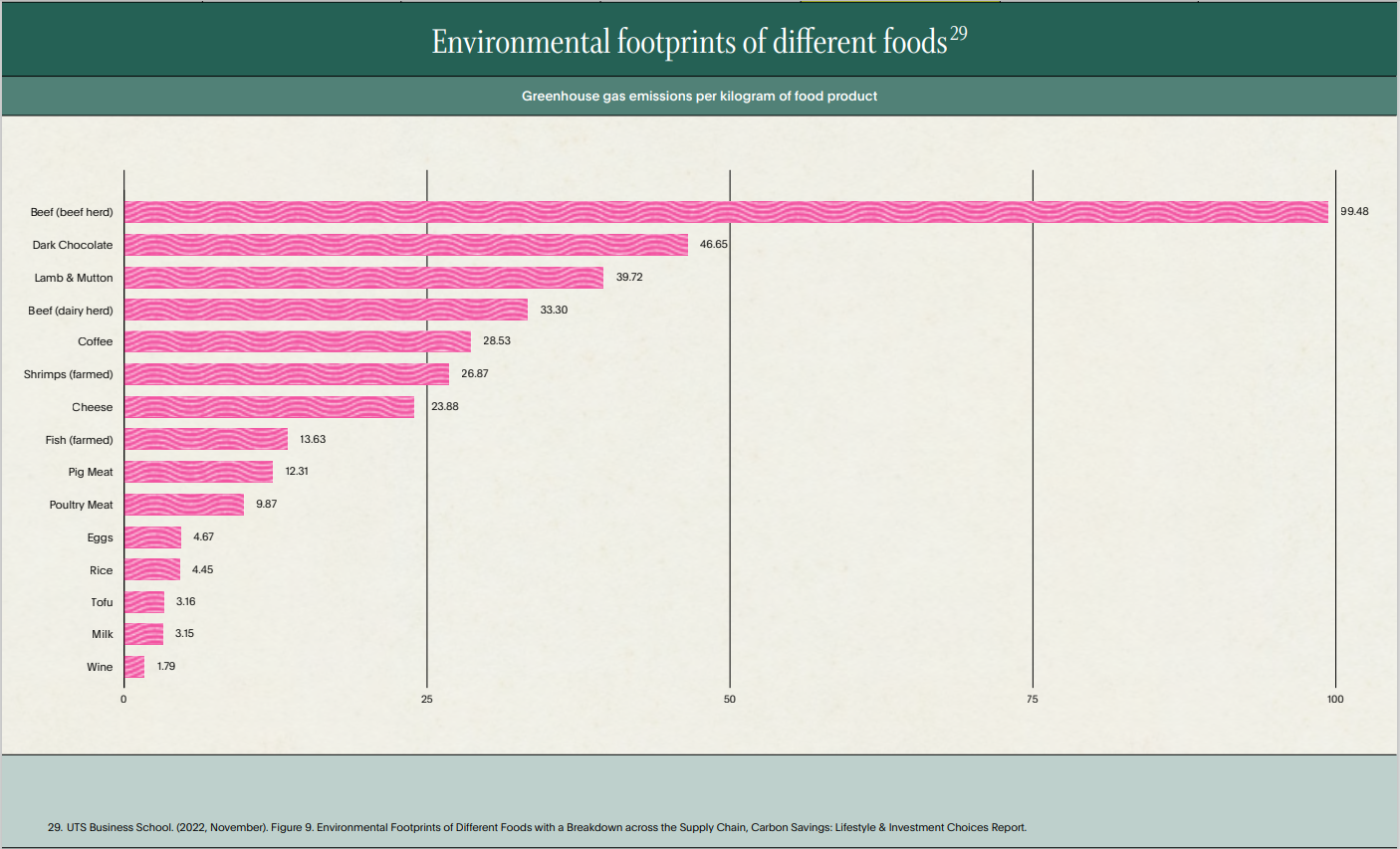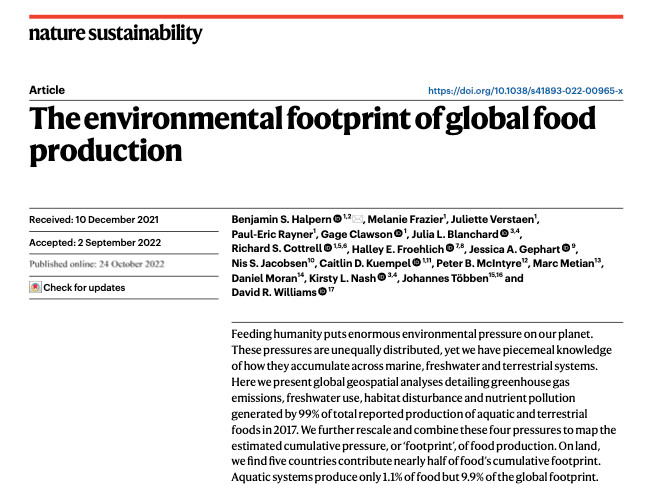
Food – Eat a plant-rich diet
Adopting a plant-rich diet significantly reduces your carbon footprint by lowering greenhouse gas emissions, especially from animal agriculture.
Animal products, particularly beef, have a much higher carbon footprint than plant-based alternatives. Australians are among the highest meat consumers globally, but by shifting to plant-based proteins, such as legumes, grains, and vegetables, we can dramatically reduce emissions. This dietary change also helps conserve water and land. Every meal is an opportunity to make a positive environmental impact and contribute to a healthier planet, improving sustainability across food systems.
Benefits

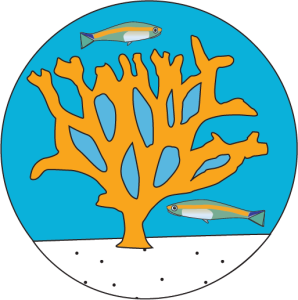

Adopting a plant-rich diet reduces carbon emissions, conserves water, and supports biodiversity, while promoting better personal health through lower risks of chronic diseases such as heart disease and diabetes.
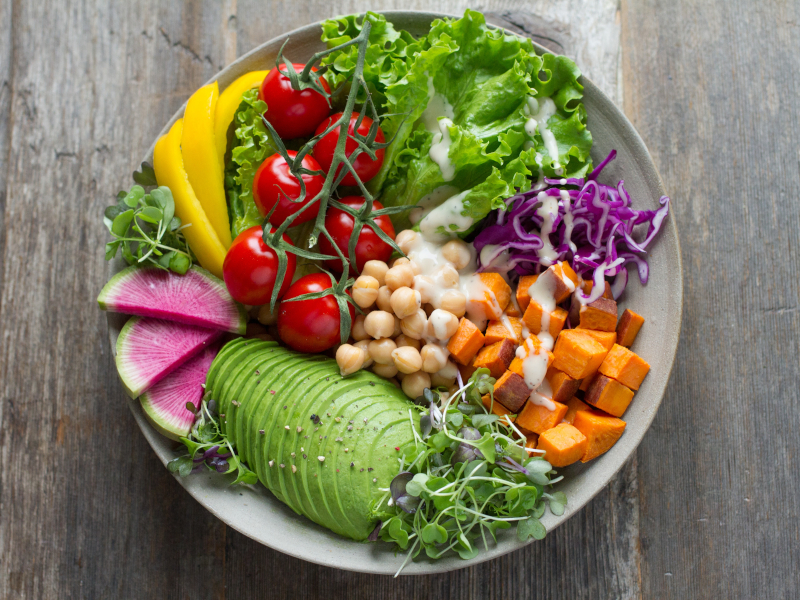
Swap out two red meat-based meals per week with plant-based ones
How To
Switch to a vegetarian diet in steps. A gradual change will give you time to find plenty of vegetarian foods and recipes that you enjoy.
Ensure your vegetarian diet includes protein-rich foods such as legumes, beans, nuts and seeds to ensure adequate protein intake and read labels to ensure you’re getting essential vitamins and minerals. Over time, build a diverse repertoire of recipes that match your taste and nutritional needs.
Tips
- Try “Meatless Mondays” or similar weekly habits to get started.
- Opt for simple, familiar dishes like veggie stir-fry, soups, or pasta.
- Incorporate meat alternatives or naturally vegetarian options to ease the shift.
- Choose chicken or other lower-carbon meats if a full switch feels challenging.
Resources

Guide: A Beginner’s Guide to Plant-Based Eating
Video: Transitioning to a Plant-Based Diet

Reduce meat portion size by 30%
How To
Tips
- Use about 30% less meat in recipes and replace with vegetables or plant-based proteins.
- Experiment with herbs and spices to enhance flavours.
- Limit meat-heavy meals and try creative vegetarian options.
Resources
Source: Australian Ethical, A little goes a long way, January 2023
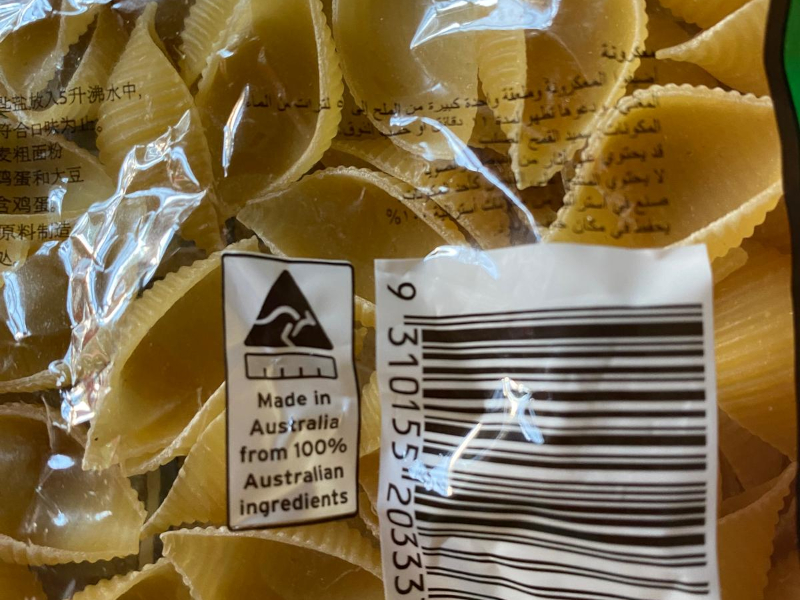
Choose local produce over imported goods
How To
With over 90% of fresh fruit, vegetables, meat, milk, and eggs supplied by Australian farmers, it’s easy to choose local produce. Check food labels or use tools like foodmiles.com to determine the distance your food has travelled. Buying local supports farmers, reduces emissions, and ensures fresher, healthier food on your table.
Tips
- Pay attention to the “Grown in Australia” or “Made in Australia” labels, as these indicate the product’s origin. Avoid items with vague terms like “packed in Australia,” which may use imported ingredients.
- Shop at farmers’ markets to directly support local producers and find fresh, seasonal produce.
- Start a home garden to grow your own herbs or vegetables for an even more sustainable option.




